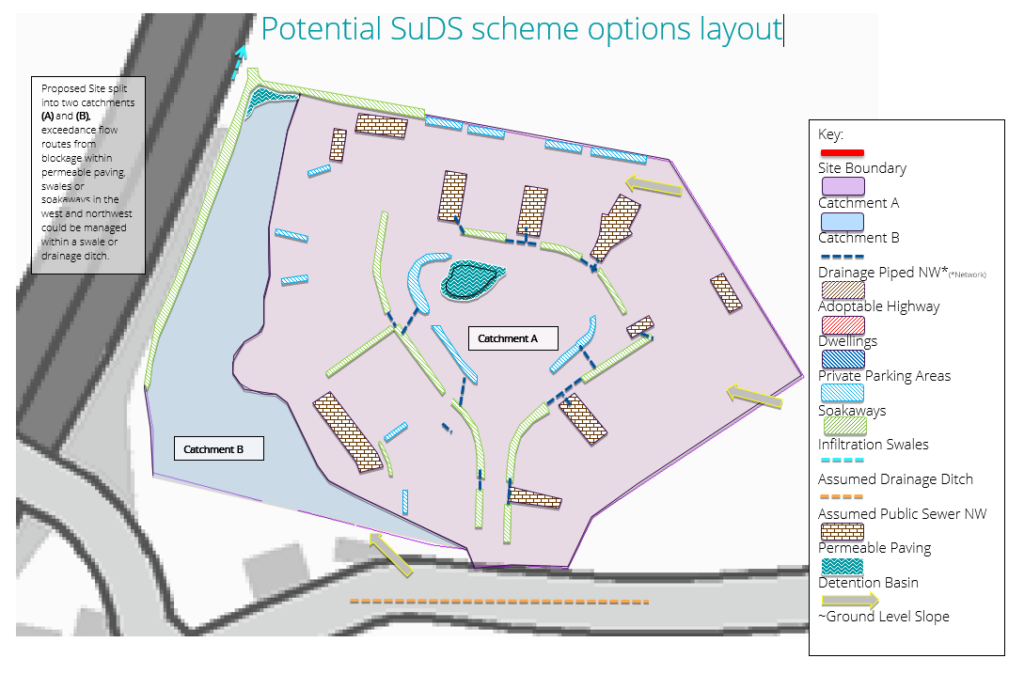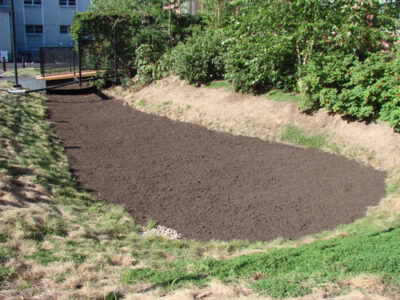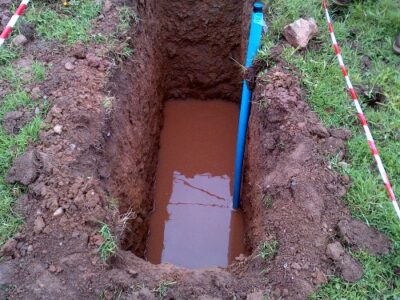Sustainable Drainage Assessment for a Large Scale Development for Over 30 Residential Units
We were tasked with assessing the drainage implications of a 2 hectare Site in Herefordshire and providing amenity benefits through the use of SuDS. Our SuDSmart Plus report was used to assess development of greenfield land into a key residential development and to provide a suitable level of detail to gain planning permission.
Our SuDSmart Plus assessment methodology enabled us to create a robust preliminary schematic for our client, which could be taken to the detailed design stage once initial planning permission had been obtained. Our assessment included the impact of flood risk to off-site receptors as a result of the increase in surface water runoff generated.
The existing land-use was used for agricultural grazing and was situated on a steep slope, adjacent to a stretch of highway. The Site was underlain by largely permeable geology comprising sandstone bedrock which was itself overlain with gravel member.
The size and topography of the Site required separation into two catchment areas to mimic the existing natural drainage regime. Since the Site was underlain by largely permeable bedrock and superficial geology, soakaways, swales and permeable paving were proposed as feasible options for attenuation and discharge of the excess runoff directly into the ground. A swale buffer and watercourse adjacent to the lowest area of the Site was used to slow the rate and catch any exceedance flows.
Existing and proposed impermeable ground cover (hard-standing) for the development and adoptable highway areas were obtained for the Site. These values were used to estimate the increase in surface water runoff generated following an extreme rainfall event taking the effects of future climate change into account.
These values were then used to calculate the required volume of water to be discharged on-site in line with national and local policy. The rainfall runoff calculations revealed that a total storage of over 370 m³ would achieve attenuation for the 1 in 100 year rainfall event with an allowance for climate change. The challenge here was to provide separate attenuation systems for the development and the adoptable highway, as well as splitting the catchments to provide a suitable reduction in discharge rates and provide attenuation to provide a SuDS scheme with real amenity benefits.
The hydrological and hydrogeological context of the development was reviewed to assess the potential for discharging the surface water runoff through a SuDS scheme and considered potential discharge routes and water quality requirements.
To manage the increase in runoff, we recommended a mixture of SuDS features that included a soakaway, swales and permeable paving. Advice was offered on the maintenance of the proposed featured which would then be finalised once a detailed scheme had been implemented. Alternative SuDS measures were proposed if, during further investigation, the original recommendations would not be feasibly practical for the Site. The features were sized appropriately to reduce the off-site runoff to the existing condition of the site. Assuming the scheme was implemented in line with our proposed plans, there was considered to be minimal off-site flood risk.
The layouts of the SuDS features were shown on a schematic plan of the proposed development and took into account the topography and underlying geology of the site.
An SuDSmart Plus Report costs just £1,195 plus VAT.



